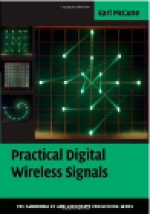Frequency modulation (FM) is a method of impressing information onto an RF carrier by means of shifting the frequency of the carrier wave proportionally to changes in the information signal. FM signals are in principle immune to sources of electrical noise that affect the amplitude of a signal, such as static electricity. Furthermore, since the amplitude of an FM modulated signal is constant, the RF amplifiers used to transmit the signal can operate at full saturated power. This operating condition allows for maximum efficiency of transferring DC power to RF power, versus dissipating power as heat. The tradeoff is that FM signals use more spectrum than other modulation formats.
See the WikiPedia article on FM.

www.rfmentor.com
Tools and training to help your RF/Wireless career
Menu
Main menu
Quick Links
User menu
User login
Popular content
- RF Technology Certification Lecture Sample
- Transceiver and System Design for Digital Communications
- EMI Troubleshooting Cookbook for Product Designers
- Wireless Communications: Principles and Practice
- The Essential Guide to RF and Wireless
- Microwave and RF Design of Wireless Systems
- Skin Effect and Surface Currents
- Training Courses on Antennas from Besser Associates
- RF Connectors Tutorial
- Rick Lyons Blog on DSPRelated



